#Mean Stack Development Company
Explore tagged Tumblr posts
Text
Hire Full Stack Developers for Seamless Solutions | Sensation Solutions
Looking to hire full stack developers for your business? Sensation Solutions offers top-notch full stack developers with expertise in front-end and back-end technologies. Our skilled developers deliver seamless solutions tailored to your specific needs, ensuring optimal functionality, performance, and user experience. With Sensation Solutions, you can build robust web applications, scalable mobile apps, and innovative software solutions. Get in touch today and hire our dedicated full stack developers to enhance your development projects and drive your business forward.
#Hire Full Stack Developers#Full Stack Development Company#Hire Mean Stack Developers#Mean Stack Development Company#Hire MERN Stack Developers#MERN Stack Development Company#Hire Dot net Developers#Dot net Development Company#Hire PHP Developers#PHP Development Company#Hire Front-end Developer#Hire Angular Front End Developer#Hire Social Media Expert
1 note
·
View note
Text

Optimizing Performance in MEAN vs MERN Stack Applications
Introduction
In the world of web application development, choosing the right stack can make a significant difference in how your project performs, scales, and adapts to change. Both MEAN Stack development and MERN Stack development are popular choices, each offering its own set of tools and benefits. Whether you’re working with a MEAN Stack development company or a MERN Stack development company, understanding how these technologies behave under the hood will help you deliver faster, more reliable applications to your users.
Understanding the Core Components
At their heart, both MEAN and MERN stacks share the same four-layer architecture: a database, a server environment, an application framework, and a front-end library or framework. MEAN stands for MongoDB, Express.js, Angular, and Node.js, while MERN swaps Angular for React. MongoDB provides a flexible document-based data store, Express.js handles routing and middleware, and Node.js powers the server with its single-threaded, event-driven model. On the front end, Angular brings a full-featured framework with two-way data binding, whereas React offers a lightweight, component-based library that uses a virtual DOM for efficient updates.
Performance Characteristics of MEAN Stack Applications
MEAN Stack applications benefit from Angular’s comprehensive tooling and built-in change detection, which can help manage complex data flows out of the box. Angular’s ahead-of-time (AOT) compilation reduces runtime overhead, translating templates into optimized JavaScript before the browser ever loads them. However, because Angular is feature-rich, the initial bundle size can be larger, affecting the time it takes for users to see the first meaningful paint. With a MEAN Stack development company, you can lean on practices like lazy loading of modules and code splitting to keep the application responsive, loading only what’s necessary when it’s needed.
Performance Characteristics of MERN Stack Applications
MERN Stack development companies often praise React’s minimalistic core and the ability to pick and choose additional libraries to suit a project’s needs. React’s virtual DOM shines in scenarios where frequent UI updates occur, as it batches and diff-checks operations to minimize actual DOM manipulations. The downside? Developers need to assemble their own toolchain—state management, routing, form handling—which can introduce inconsistencies if not managed carefully. Yet, this flexibility allows for highly optimized builds: tree-shaking removes unused code, and server-side rendering (SSR) or static site generation (SSG) can be added to speed up initial page loads and improve SEO.
Shared Performance Optimization Strategies for MEAN and MERN Stacks
Regardless of whether you choose MEAN or MERN, some best practices apply across the board. Compressing assets like JavaScript and CSS using gzip or Brotli reduces payload sizes. Enabling HTTP/2 or newer protocols allows multiple resources to load over a single secure connection. Caching static assets with proper cache-control headers ensures repeat visitors experience lightning-fast page loads. On the database side, indexing frequently queried fields in MongoDB can drastically cut down response times. Finally, profiling server-side code with tools like Node’s built-in profiler highlights bottlenecks in route handlers or middleware, guiding targeted refactoring.
Frontend-Specific Optimization Techniques: Angular vs React
When optimizing an Angular-based front end, leverage change detection strategies such as OnPush to limit re-renders only to components whose inputs have truly changed. Use Angular CLI’s built-in budler to analyze bundle sizes and eliminate redundant code. In contrast, for React, employ memoization with React.memo() or useMemo to avoid unnecessary re-renders of pure functional components. Dynamic imports let you break the UI into smaller chunks, loading heavy components only when users navigate to them. Both ecosystems benefit from performance budgets: setting a size threshold for individual bundles keeps teams aware of the impact of new dependencies.
Optimizing React Performance in MERN Stack Applications
Within a MERN Stack development project, React performance can be taken further by implementing SSR or SSG through frameworks like Next.js. SSR improves time-to-first-byte by rendering HTML on the server, while SSG pre-builds pages at compile time, serving them as static files. When dynamic data is involved, incremental static regeneration combines the best of both worlds. Additionally, integrating a content delivery network (CDN) for your React assets offloads traffic from your Node.js server and brings resources closer to users worldwide. Finally, monitoring bundle sizes with tools like Webpack Bundle Analyzer ensures growth remains in check.
Backend-Level Performance Enhancements for Both Stacks
On the server side, clustering your Node.js process across multiple CPU cores ensures that incoming requests are spread evenly, increasing throughput. Utilizing connection pooling with MongoDB drivers reduces latency by reusing existing database connections. For compute-intensive tasks—image processing, encryption, or complex calculations—delegating work to a message queue (e.g., RabbitMQ or Redis streams) decouples these jobs from the request-response cycle, keeping APIs snappy. Applying rate limiting and request throttling guards against traffic spikes and malicious actors, maintaining stability under load.
Choosing Between MEAN vs MERN Based on Performance Needs
Your choice between MEAN Stack development and MERN Stack development often hinges on project requirements and team expertise. If you need a structured framework with best practices baked in and prefer convention over configuration, Angular within the MEAN stack provides a ready-made environment for large-scale applications. Conversely, if you value modularity, lightweight builds, and the freedom to select your own libraries, React in the MERN stack affords greater flexibility. A MERN Stack development company may be more agile in adopting the latest tools, while a MEAN Stack development company might excel at delivering comprehensive solutions with fewer third‑party dependencies.
Conclusion
Performance is a multi‑layered concern that touches every part of your application—from the database to the server, down to the tiniest UI component. Both MEAN and MERN stacks are capable of delivering robust, high‑speed web applications when approached thoughtfully. By understanding the strengths and trade‑offs of Angular and React, applying shared optimization techniques, and tailoring your choice to your team’s skill set and business goals, you’ll be well on your way to launching fast, responsive apps that delight users. Whether you partner with a MEAN Stack development company or engage a MERN Stack development company, prioritize ongoing performance monitoring and continuous improvement to keep your applications running at peak efficiency.
#MERN Stack development company#MERN Stack development#MEAN Stack development#MEAN Stack development company#Performance Analyzing#comparison
0 notes
Text
Hire MEAN Stack Developers today
Develop full-stack apps with MEAN. Hire Dedicated MEAN Stack Developers for scalable solutions. For more information, visit us.
https://braininventory.in/hire-mean-stack-developers
#Hire MEAN Stack Developers#hire dedicated mean stack developers#mean stack development services#mean stack development company
0 notes
Text

Want to build scalable, fast, and secure web applications? MEAN Stack (MongoDB, Express.js, Angular, Node.js) is the perfect solution for businesses of all sizes. From reducing development costs to ensuring full-stack efficiency, MEAN Stack offers unparalleled advantages.
#MEAN Stack Development Services Company#MEAN Stack Development Services#MEAN Stack Web Development Services#MEAN Stack Development Company#MEAN Stack Development Consultant#Hire MEAN Stack Developers#Hire MEAN Stack Developers in India#Hire MEAN Stack Developers in USA
0 notes
Text
#MEAN Stack vs MERN Stack#MEAN Stack development Company#MERN Stack development company#MEAN Stack development Services#MERN Stack Development Services#hire mean stack developers#Hire MERN Stack Developers
0 notes
Text

Which is the popular Mean stack training in kerala?
A Mean stack developer is someone who can work on both the front end and back end of an application. The developer should be able to work with both front-end and back-end technologies, however a deep expertise of both is not necessary for a whole stack. An expert who can design and manage the front end, back end, database, version control, server, and application programming interface (APIs) of an application is known as a net developer. Trends indicate that the.NET industry is in need of mean Stack Developers more and more.
HTMLS, CSS3, Photoshop, Javascript and AngularJS, Bootstrap and MySQL, Python and Django Framework, MangoDB, and Flask are all included in mean-stack training in kerala. At Zoople Technologies, you will discover a plethora of skills related to developing and overseeing web services and interfaces, adding new functionality to APIs, doing functional testing, troubleshooting and fixing difficulties, and much more. The mean stack course in kochi will assist you on our real-world projects, and students gain real-world experience. Our experienced mentors will assist you during this time. We also help our students create portfolios so that when they apply for jobs, their resumes will stand out. After the course, students can benefit from our mock test, which provides an overview of an interview.
#kerala#kochi#mean stack development services company#mean stack development company#education#software training institute
0 notes
Text
Reason for choosing Mean stack training in Kerala

MEAN Stack training in Kerala provides aspiring developers with the essential skills to create dynamic web applications using MongoDB, Express.js, Angular, and Node.js. This hands-on program emphasizes real-world projects, ensuring students gain practical experience and confidence in their abilities. With guidance from experienced instructors, participants learn industry best practices and develop a solid understanding of full-stack development. Flexible learning options, including online and weekend classes, make it accessible to both beginners and professionals looking to enhance their tech expertise in a thriving IT ecosystem.
1 note
·
View note
Text
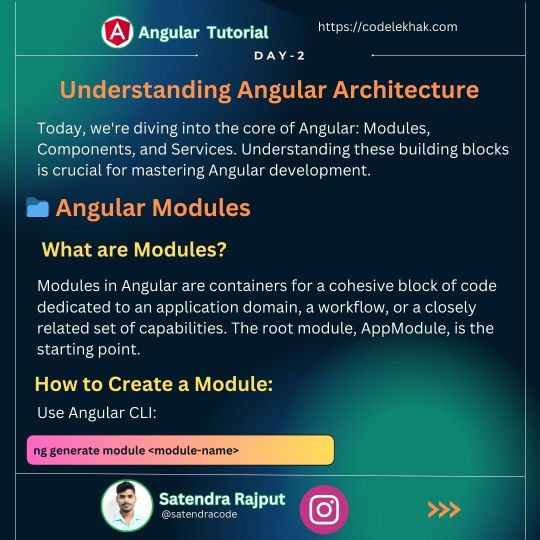
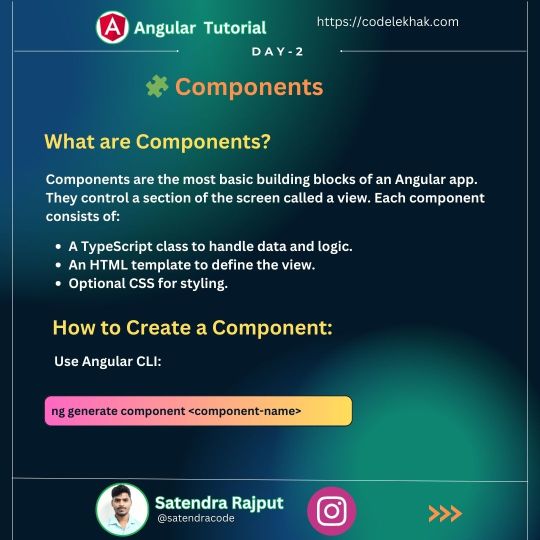
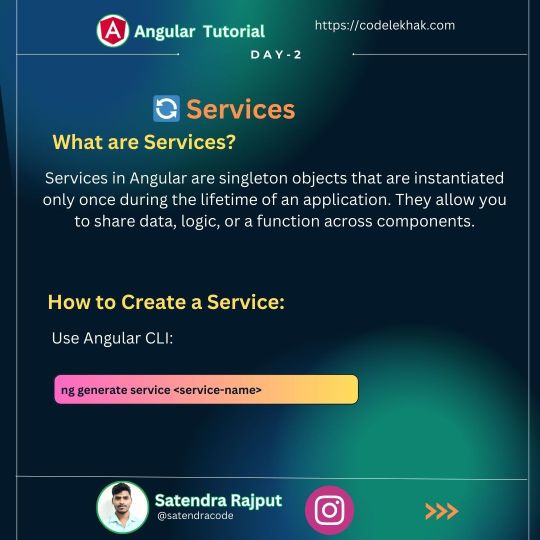
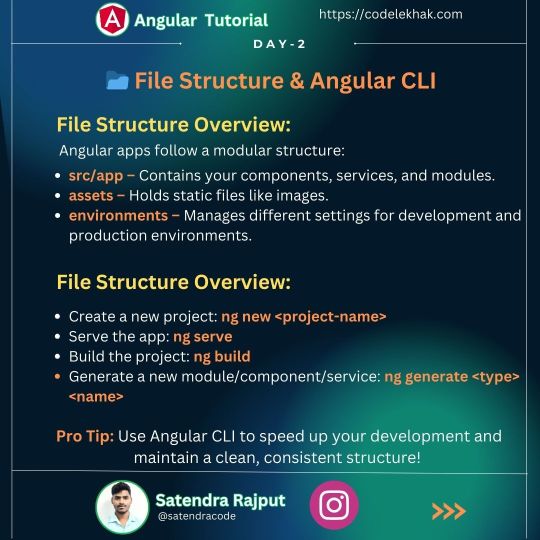
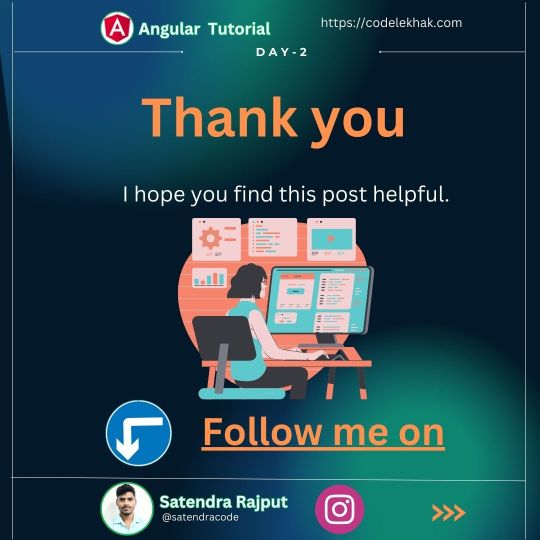
🚀 Day 2: Understanding Angular Architecture 🛠️
Today, we're diving into the core of Angular: Modules, Components, and Services. Understanding these building blocks is crucial for mastering Angular development.
#mongo#mongoose#node.js#express#node#nodejs#angular#css animation examples#cs submission#css3#mean stack#mean stack development company#html5 css3#html5#html5 game#javascript#html css#htmlcoding#html#coding#programming
0 notes
Text
#mean stack development company#best mean stack development company#mean stack web development company#mean stack development firm#mern stack web development services#web development using mern stack#mern development company#mern stack web application#mern stack development services india
0 notes
Text

What Drives the Future of MEAN Stack Development in 2025?
As MEAN stack development continues to evolve in 2025, businesses are leveraging innovative trends like AI integration, low-code platforms, and cloud-native technologies to enhance scalability and efficiency. Sensation Software Solutions leads the way by embracing these cutting-edge advancements, ensuring clients stay ahead with robust, future-ready applications. Discover what’s driving the future of MEAN stack development today.
#hire mean stack developers#mean stack development company#full stack development company#developer#mean stack developers
1 note
·
View note
Text

Full-Stack Face-Off: Breaking Down MERN and MEAN Stacks
Introduction
In today’s ever-changing tech world, choosing the right full‑stack approach can feel overwhelming. Two popular choices stand out: the MERN and MEAN stacks. Both bring together powerful JavaScript frameworks and tools to help developers build dynamic, end‑to‑end web applications. Whether you represent a MERN Stack development company or a MEAN Stack development firm, understanding the strengths and trade‑offs of each is essential. In this guide, we’ll walk through the basics, explore individual components, and help you decide which path aligns best with your project goals.
Understanding the MERN and MEAN Stacks
At a high level, both stacks rely on JavaScript across the entire application. This common language makes it easier for teams to collaborate and share code between client and server. The core difference lies in the front-end framework:
MERN: MongoDB, Express.js, React, Node.js
MEAN: MongoDB, Express.js, Angular, Node.js
MongoDB handles data storage in both cases as a flexible, document‑oriented database. Express and Node serve as the backbone for server‑side logic and routing. React and Angular provide the user interface layer, each with its own philosophy on component management and data flow. For a MERN Stack development company, React’s component‑driven model allows for fine‑grained control and reuse. On the other hand, a MEAN Stack development company may favor Angular’s built‑in features like dependency injection and two‑way data binding for rapid prototyping.
Exploring MEAN Stack Components
MongoDB: This NoSQL database stores data in JSON‑like documents, making it simple to scale and adapt as your app grows.
Express.js: A minimalist web framework for Node.js that simplifies building robust RESTful APIs.
Angular: A full‑featured front‑end framework maintained by Google. It offers out‑of‑the‑box support for forms, HTTP services, and routing.
Node.js: A JavaScript runtime built on Chrome’s V8 engine, enabling server‑side scripting and non‑blocking I/O.
When a MEAN Stack development company takes on a project, they often appreciate Angular’s opinionated structure. Angular enforces a clear project layout, with modules, components, and services neatly separated. This structure promotes consistency, especially for larger teams. The built‑in CLI tools streamline tasks like scaffolding components or running tests. However, the learning curve for Angular can be steeper compared to React, since it has its own templating syntax and TypeScript at its core.
Exploring MERN Stack Components
MongoDB: Just like in MEAN, your data is stored in flexible, JSON‑style documents.
Express.js: Manages your server’s routes, middleware, and API endpoints.
React: A library for building interactive UIs with a virtual DOM and component‑based architecture.
Node.js: Powers the backend with efficient, event‑driven operations.
For MERN Stack development, React’s learning curve is often gentler. Developers pick up JSX quickly, writing HTML‑like syntax combined with JavaScript logic. A MERN Stack development company will benefit from React’s thriving ecosystem: hooks, context API, and a wealth of third‑party libraries. React’s unopinionated nature gives teams freedom to choose their own state management, styling approaches, and routing solutions. While this flexibility is appealing, it requires a bit more decision‑making during project setup.
Choosing Between MERN and MEAN Stacks: A Comprehensive Guide
When it comes to selecting the ideal stack, consider the following factors:
Team Expertise: If your developers are comfortable with TypeScript and enjoy a more prescriptive framework, MEAN might be a better fit. Conversely, if your team prefers flexible libraries and a quick start, a MERN Stack development approach could be more efficient.
Project Size and Scope: Large enterprise applications can benefit from Angular’s mature feature set, making MEAN development smoother at scale. Smaller to mid‑sized projects, or those requiring rapid iteration, often find MERN development to be more nimble.
Performance Needs: Both stacks are performant, but React’s lightweight core can deliver snappier interactions for complex user interfaces. Angular’s built‑in change detection and optimizations shine when building heavy, data‑driven apps.
Ecosystem and Libraries: MERN’s ecosystem is rich in community‑driven packages, while Angular offers more official, first‑party solutions. Choose the stack whose library landscape aligns with your project requirements.
Community Support and Cost Considerations
Whether you lean toward a MEAN Stack development company or a MERN Stack development company, community support plays a vital role. Both stacks enjoy active user bases, extensive tutorials, and frequent updates. However, there are subtle differences:
MERN Community: Enormous number of React resources, tutorials, and third‑party tools. React’s popularity means you’ll find plenty of open-source components and UI libraries, often at no cost. For a MERN Stack development company, this translates into faster development cycles and reduced licensing expenses.
MEAN Community: While smaller than React’s, Angular’s community is backed by Google and offers official tooling, detailed documentation, and enterprise‑grade support. Some parts of Angular’s ecosystem, like certain enterprise integrations, may carry licensing fees, but most core features are freely available.
When budgeting, factor in training time and tooling costs. A MEAN Stack development company may need to invest more initially in Angular workshops, whereas a MERN Stack development company might spend time vetting and maintaining community‑built libraries.
Conclusion
In the battle of MERN vs. MEAN, there’s no one‑size‑fits‑all winner. Both stacks harness JavaScript to build full‑fledged web apps, but they cater to different development styles and project demands. If you value a structured, feature‑rich framework and seamless TypeScript integration, MEAN Stack development could be your go‑to choice. If you prefer flexibility, rapid prototyping, and a massive ecosystem of community tools, MERN Stack development might be the way forward. Ultimately, the best stack aligns with your team’s strengths, your project’s needs, and your long‑term vision.
#MERN Stack development company#MERN Stack development#MEAN Stack development#MEAN Stack development company
1 note
·
View note
Text
Get practical tips for hiring skilled MEAN Stack developers. Learn how to evaluate their expertise in JavaScript, MongoDB, Node.js, and more for successful projects.
#mean stack development services#mobile app development#mobile app developers#mean stack development company
0 notes
Text

MEAN Stack combines flexibility, scalability, and efficiency, making it a powerful choice for businesses aiming to stay ahead in the digital age.
#MEAN Stack Development Services Company#MEAN Stack Development Services#MEAN Stack Web Development Services#MEAN Stack Development Company#MEAN Stack Development Consultant#Hire MEAN Stack Developers#Hire MEAN Stack Developers in India#Hire MEAN Stack Developers in USA
0 notes
Text
mean stack training in Noida
Softcrayons, the best Mean stack training in Noida, Provides great Mean Stack courses.
They assure to help 100% every student find jobs, standing by them all the way. They plan their programs and classes to fit what learners Need, giving choices like day, weekend batches, night batches, and fast-track options
0 notes
Text
Explore the differences between Full-Stack, MEAN, and MERN Stacks. Find the best stack for your project in our comprehensive 2024 guide!

#Full Stack vs MEAN vs MERN Stack#Full stack development company#MEAN Stack development company#MERN Stack Development company#Full stack vs MEAN Stack#Full stack vs MERN Stack#Hire full stack developers#hire mean stack developers#hire mern stack developers#Best mobile app development company#Hire mobile app developers#custom web app development company#hire web developers
0 notes
Text

Knowing Mean stack development can give you a top priority in the software field. Our 4 month mean stack training in kochi can enable the career you have been looking for. Zoople technologies in kochi is the top software institute to shape your knowledge and skills to advance your dream positions. Our certified experts in the mean stack field can give the best valuable guidance for your growth. Zoople has been the best mean stack training in kochi based on students review. We offer 100% placement job aid upon course completion. Mean stack training kochi consists of various development programs such as MongoDB, Express.js, Angular.js, Node.js. This training allows developers to apply the same language for front end development and back end. Over 80% of software development organizations employ mean stack courses in Kochi, making them one of the most sought-after courses to enroll in. The full stack developer training in Kochi usually helps you become an expert in web applications. The process of generating HTML involves executing server-side code and logic, which results in the creation of several views for distinct users.
Our skilled educators will help to use real-world applications to teach object-oriented programming approaches and data processing frameworks, producing training that is 100% dependable and of the greatest quality.In addition to testing technologies and a protractor, students enrolling in the mean stack training in kochi will receive all relevant information. The hands-on workshops in the course, which include testing and deploying code, will offer in-depth comprehension and training focused on industry standards. Zoople being a Mean Stack training institute in Kochi will ensure that you understand full MEAN Stack programming that you need for your profession. You can advance your career by learning how to develop cutting-edge online applications that have the potential to completely transform the industry with the assistance of the Mean Stack Training Institute. Zoople guarantees your knowledge of comprehensive MEAN Stack programming and offers Mean Stack courses in Kochi. With the help of the Mean Stack Training Institute, you may progress your career by learning how to create cutting-edge online applications that have the potential to revolutionize the industry.
#mean stack development services company#mean stack development company#education#full stack course#mean stack developer#kochi#kerala#training intitute#india#software#software training institute#web developers#software development
0 notes